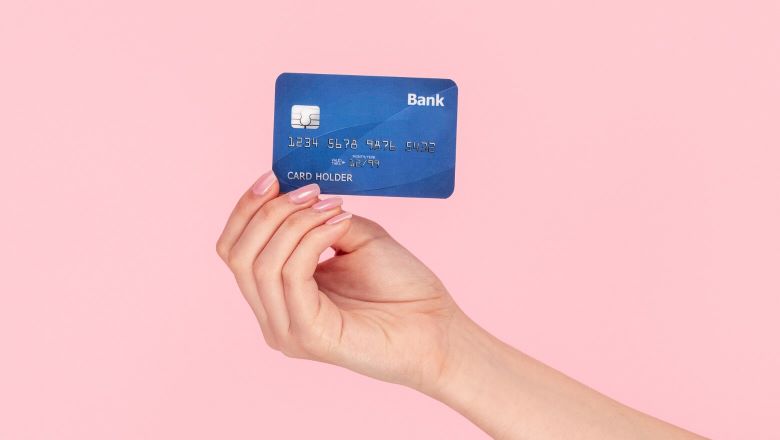6 Souvenirs You Won’t Regret Buying (and 5 You Might)
For some travelers, shopping for souvenirs is a vacation highlight. Whether along a street of indie boutiques in a big city or at a craft market by the beach, hunting for items that you won’t find back home can be a thrill. What’s more, every time you use or wear your purchases — or spot a friend with something you gifted them — can trigger happy memories of the place you explored.
Unfortunately, it’s all too easy to come home with overpriced trinkets that you quickly tire of or even regret. Being more thoughtful about the types of souvenirs you bring home from your vacation can make your trip more memorable and save you some money. While the “best” souvenirs will depend on your own specific likes, interests, and budget, these tips can help you shop smarter.
How Much Should You Spend on Souvenirs?
Just as with any other part of your finances, you will want to have a budget for your travel souvenirs. Without one, you’re likely to end up spending more than you intend.
But how much to spend on souvenirs? The exact amount depends on what’s important to you.
• One strategy is to decide beforehand what kind of souvenirs you want to bring back from your trip. Let’s say you’re heading to California and are excited to visit a certain clothing shop you’ve been following on social media. You may want to designate the cost of a typical, say, shirt or pair of pants in your budget.
• If you’ve already maxed out your budget on plane tickets and a boutique hotel, however, you may want to allocate just $20 or so for a little something to remind you of your trip. (Note: Don’t fool yourself with book now, pay later travel plans; you definitely need to account for those charges you will owe and not overspend when traveling.)
• Another thing to keep in mind is budgeting for children’s souvenirs. One way that families can afford to travel is by keeping the overall souvenir budget low. Souvenirs may be even more meaningful for kids than parents, so one strategy is to give each child a set budget beforehand if they are old enough to do basic math. That way, instead of having them constantly asking for souvenirs during their trip, they know that they have a specific budget and can plan accordingly.
What Are the Most Popular Souvenirs?
Here is a list of some of the most popular souvenirs that travelers bring home from their vacation. While they tend to be mass-produced (and have no real connection to the location where you buy them), they also make inexpensive gifts for friends and coworkers:
• Fridge magnets
• Shot glasses
• Christmas ornaments
• Postcards
• T-shirts or other clothing
• Photo frames
If you’re looking for ways to stretch your souvenir budget a little further, consider using credit card rewards as a way to help pay for these small gifts.
Meaningful Souvenirs You Won’t Regret
Because there’s such a wide variety among travel souvenirs, you want to make sure to get ones that will be meaningful. While the exact definition of “meaningful” will vary for each person, here are a few items to consider:
• Postcards: These can be a great option, especially if you write a meaningful memory on it and mail it to yourself. You can frame it when you get home. Another plus: Postcards are super lightweight and easily packed.
• Handcrafted items: If you’re saving money on hotels by staying somewhere local, you may have extra money to buy, say, a small carved wooden box from Costa Rica.
Artwork: Continuing with local inspiration, another possibility is local artwork. Just make sure you have a reliable way to get it back home.
• Foreign currency & coins: When you’re traveling internationally, consider keeping a small amount of foreign currency or coins as a memento of your trip.
• Something practical: Another option to consider is something practical like a locally printed beach towel or tote bag. Not only will it bring back great memories, it’s also something you can regularly use.
• Photos: Just don’t let them sit in your hard drive: Print them out to give as gifts or display at home. Consider a local photo frame to show off some of your best shots.
Recommended: Where to Keep a Travel Fund
Souvenirs to Avoid
Here are a few souvenirs that you’ll want to avoid:
• Shells, coral, wildlife, and animals: While seashells and coral might seem like great souvenirs from a beach vacation, it’s not eco-friendly to remove these items from the local habitat. Many locations even have laws about removing such natural wonders from the beach.
And even though you may encounter many adorable stray dogs or cats while traveling, remind yourself of what a big commitment it can be to own a pet (and then potentially travel with a pet).
• Coffee mugs: Mugs are generally fragile and not locally made. Plus, how many coffee mugs do you really need?
• Food and alcohol: While eating and drinking locally can be a great way to get into the vacation spirit, bringing home food or drink runs the risk of your souvenirs getting seized by customs.
• Things you can buy cheaper at home: Do some research before you buy — if you can buy it cheaper online, it’s probably not a great souvenir.
• Key rings: This is similar to the coffee mug problem. Sure, they’re cute and widely available, but how many do you need?
Tips for Souvenir Shopping
Here’s some advice to help increase the odds that you souvenir-shop for items you’ll treasure for years to come:
• Research your destination’s signature products before you leave. If you’re heading to Venice, you might want to bring back a small glass pendant from Murano (the nearby “Glass Island”), where you can watch artisans at work; this has been a local tradition for centuries.
• Set a souvenir budget and decide before you go what you want to bring back as a souvenir. This can help prevent you from overspending and blowing your budget in the moment.
• Think small, and look for products that are locally and ethically sourced.
• Another idea is to pick a theme for your souvenirs (inexpensive bracelets or bumper stickers), or use a travel credit card or cash back rewards credit card for your purchases that can reward you for spending.
Recommended: How Does Credit Card Travel Insurance Work?
The Takeaway
For many people, bringing home souvenirs is one of the best parts of a trip. While the perfect souvenir will be different for each person, there are a few things that you can do to get meaningful mementos without breaking the bank. Make a plan and set your budget beforehand, and look for items that are specific to the area, ethically sourced, and perhaps handmade. Chances are, you don’t need another coffee mug, but a locally crafted item might be just the thing to remind you of your travels.
SoFi Travel is a new service offered exclusively to SoFi members. Earn 2x rewards when booking with your SoFi Mastercard or debit card. Then apply those rewards to your next trip when you book through our travel portal. SoFi makes planning a getaway fast, easy, and convenient — perfect for people on the move.
Photo credit: iStock/ArtMarie
1See Rewards Details at SoFi.com/card/rewards.
When you use your SoFi Credit Card to make a purchase on the SoFi Travel Portal, you will earn a number of SoFi Member Rewards points equal to 3% of the total amount you spend on the SoFi Travel Portal. Members can save up to 10% or more on eligible bookings. SoFi Member Rewards: All terms applicable to the use of SoFi Member Rewards apply. To learn more please see: https://www.sofi.com/rewards/ and Terms applicable to Member Rewards. Additional Terms:
Changes to your bookings will affect the Rewards balance for the purchase.
Any canceled bookings or fraud will cause Rewards to be rescinded.
Rewards can be delayed by up to 7 business days after a transaction posts on Members’ SoFi Credit Card ledger.
SoFi reserves the right to withhold Rewards points for suspected fraud, misuse, or suspicious activities.
**Terms, and conditions apply: The SoFi Travel Portal is operated by Expedia. To learn more about Expedia, click https://www.expediagroup.com/home/default.aspx.
Eligibility:
You must be a SoFi registered user.
You must agree to SoFi’s privacy consent agreement.
You must book the travel on SoFi’s Travel Portal reached directly through a link on the SoFi website or mobile application. Travel booked directly on Expedia's website or app, or any other site operated or powered by Expedia is not eligible.
You must pay using your SoFi Credit Card.
©2024 SoFi Bank, N.A. All rights reserved. Member FDIC. Equal Housing Lender. NMLS #696891 (Member FDIC), (www.nmlsconsumeraccess.org).
Financial Tips & Strategies: The tips provided on this website are of a general nature and do not take into account your specific objectives, financial situation, and needs. You should always consider their appropriateness given your own circumstances.
SOCC0323032




